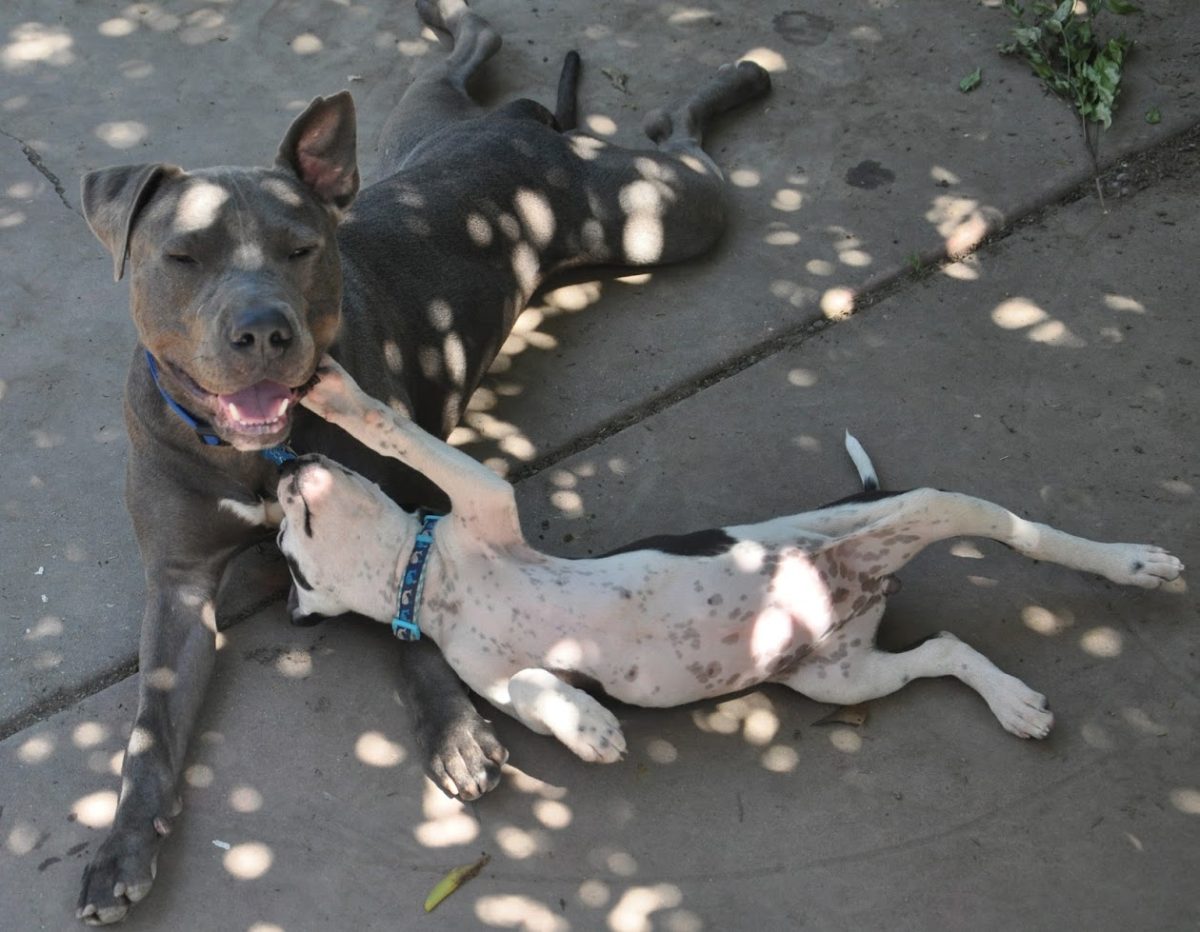
Tucker & Alice courtesy of Central California Pets Alive.
Want to cut length of stay and increase dog adoptions? Drop the labels.
Shelters and pounds across the country are removing breed labels on their dogs and with good reason. First, studies show that shelter workers misidentify breeds often. This is especially true when it comes to dogs labeled as “pit bulls”: “breed identification of pit-bull-type dogs by shelter staff and veterinarians was shown to be inconsistent among individuals and an unreliable means of identification. In particular, 50% of dogs labeled as pit bulls lacked DNA breed signatures of breeds commonly classified as pit bulls.”
Second, breed identification could negatively impact length of stay and adoption when people falsely believe that stereotypes about breeds can determine behavior: “Negative perceptions of certain breeds of dogs, particularly about pit-bull-type breeds, may be influenced by [media] reports” which are often sensationalist and fueled by quack science and the pit bull hysteria industry.
Third, the way that it is used in the U.S. for every dog with a blocky head, “pit bull” is not even a breed of dog. It is, according to a leading advocacy organization, “a catch-all term used to describe a continually expanding incoherent group of dogs, including pure-bred dogs and mixed-breed dogs. A ‘pit bull’ is any dog an animal control officer, shelter worker, dog trainer, politician, dog owner, police officer, newspaper reporter or anyone else says is a ‘pit bull.'” (This is also why breed bans are so problematic, not only are communities killing dogs based on meaningless stereotypes, they are killing dogs they mistakenly think fit those stereotypes by the way they look.)
For example, dogs labeled “pit bulls” in Austin have an average/mean adoption time of one month, compared to one to two weeks for other dogs. (Once in those homes, they not only do well, they thrive. Interestingly, 41% of stray dogs labeled “pit bulls” were reclaimed by their families, compared to 29% of chihuahuas.)
Would eliminating labels reduce length of stay and spur more adoptions? A new study says that it will. The study examined the “attractiveness” of certain dogs based on breed identification and compared it with lookalike dogs without breed labels. The breed identification impacted people’s view of the dog’s “intelligence, friendliness and adoptability” and “perceived aggressiveness.”
When shelters removed breed labels, not only were dogs traditionally labeled “pit bulls” adopted more and adopted more quickly, all dogs were: “In the shelter, removing breed labels was associated with increased adoptions and reduced length of stay for all breed groups, particularly pit-bull-type dogs.” Dogs in the study labeled “pit bulls” had three times the average length of stay than lookalike dogs without the labels — a difference that disappeared once the labels were removed.
The conclusion: “removing breed labels from kennel cards and online adoption profiles may be a simple, low-cost strategy to improve shelter dog outcomes.”
The study, “What’s in a Name? Effect of Breed Perceptions & Labeling on Attractiveness, Adoptions & Length of Stay for Pit-Bull-Type Dogs” is here: http://dx.doi.org/10.1371/journal.pone.0146857
————-
Have a comment? Join the discussion by clicking here.